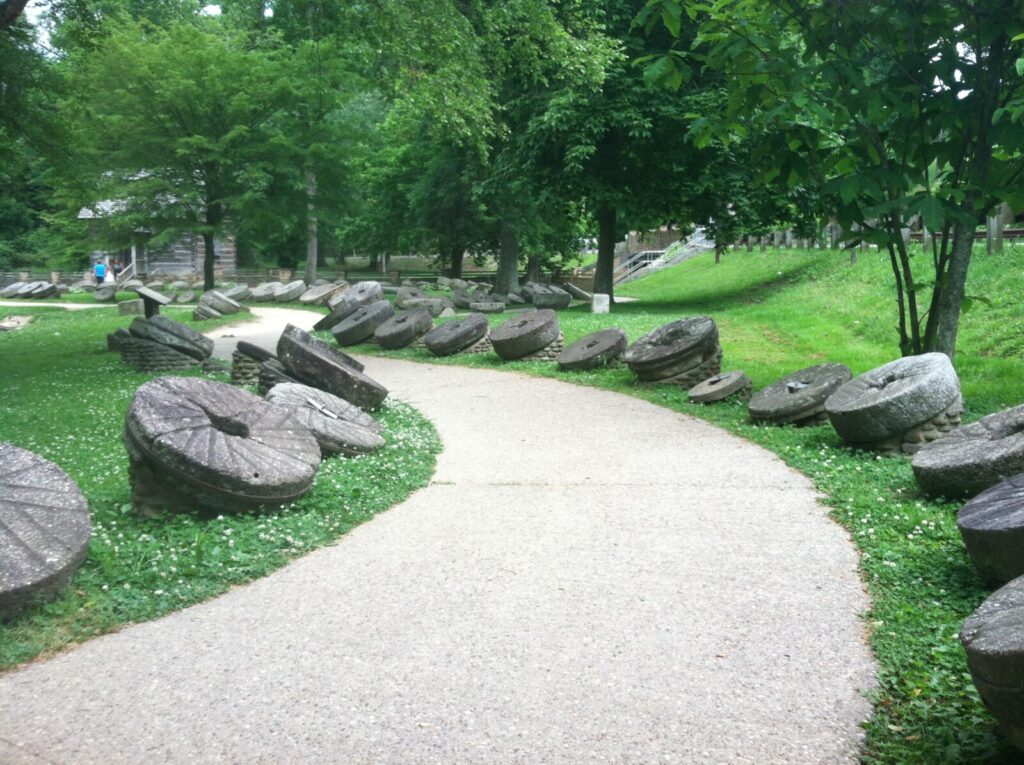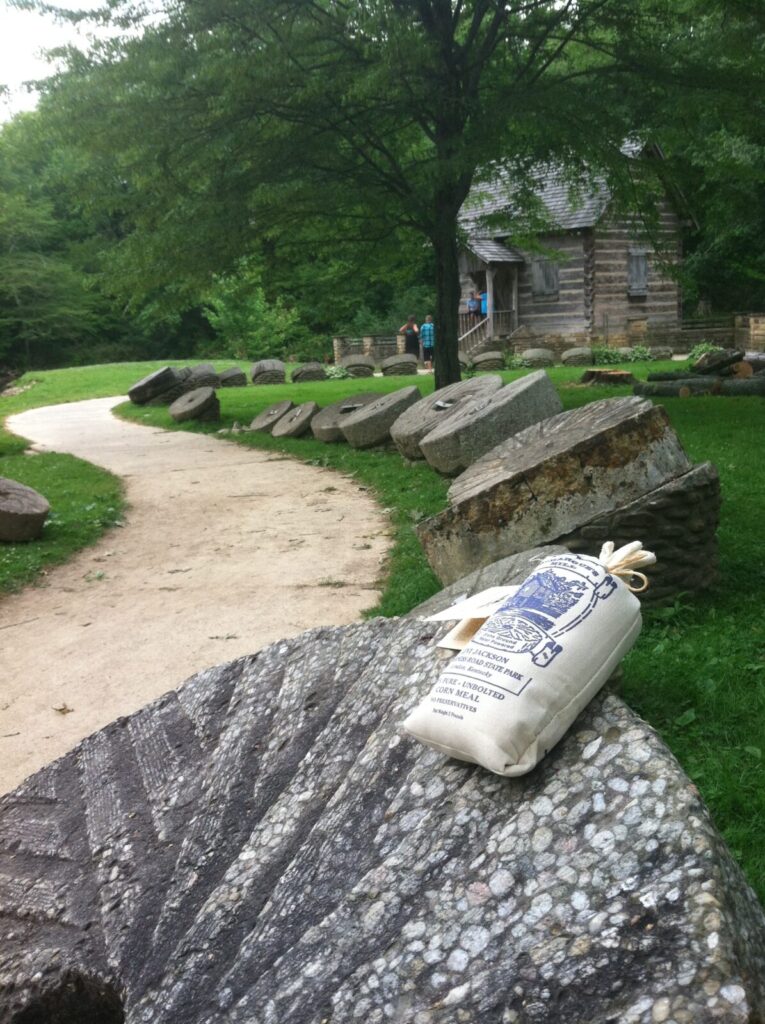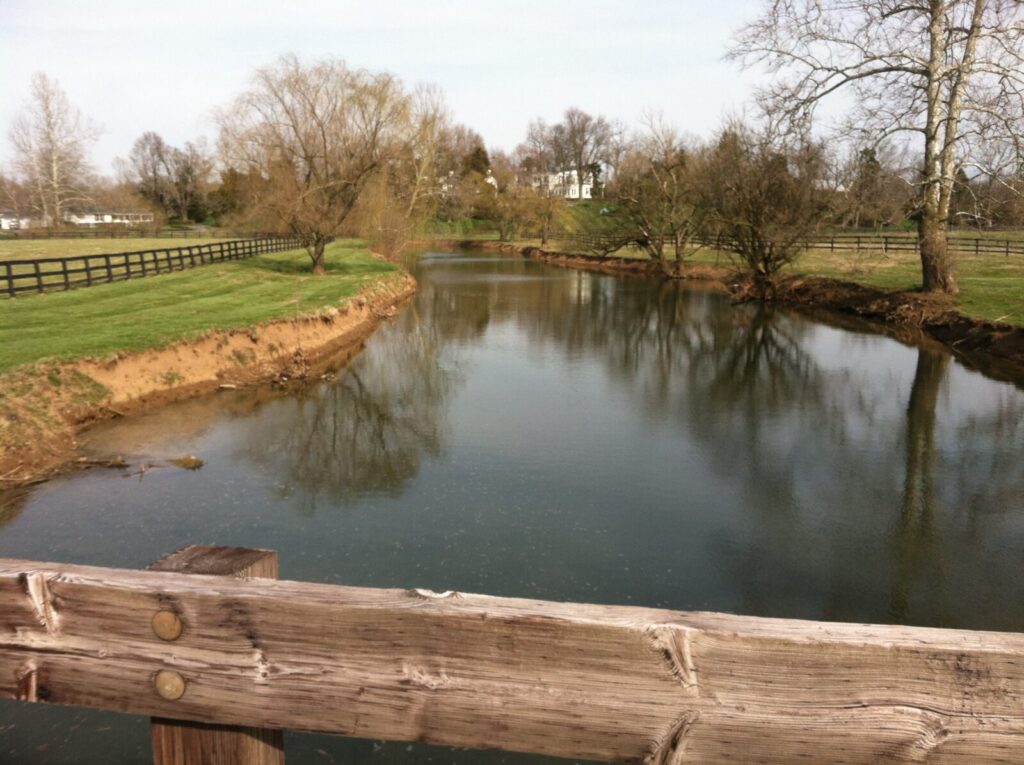I took a roadtrip down to Levi Jackson State Park on Saturday. No real agenda, no clear picture of where I was going to spend the night, what I was going to see, where I was going to go. As I left Lexington, I had a sense of urgency, of needing to get there, heedless of not knowing where “there” was. That continued until I got to Marksbury Farm Market just outside Lancaster on 27. I stopped in for a sandwich and a chat and as I sat outside eating, I could feel the rush slip away. I was a tourist. I could stay there till dark, turn around and head home. Or I could head on down to Levi Jackson pronto. Or I could meander at a sedate pace, letting the beauty and charm of the land permeate. The words to a Bob Seger song kept popping into my head: “I could go left or I could go right; it was all up to me to decide.” I chose the latter and rolled on through the day.
I am not being completely truthful when I say I had no real agenda. I was going down to see the mill stone museum located at Levi Jackson. A hundred or so millstones from old Kentucky mills line the walk leading to an old mill. What I didn’t realize was my original agenda was about to be subsumed by the conversation I was going to have with Bob House, docent and ranger of the rebuilt, fully operational mill located in the park. I got there around 10. He had just opened up the cabin and I eagerly pressed him for a tour. The cabin and much of the furnishings had been built in 1805. It was moved and rebuilt in it’s current location in the 1930’s, as part of the WPA. And it had been operating there since.

The joys of simple technology! When Bob opened the water gate (My favorite bumpersticker from the Nixon era: “Behind every water gate is a mill house.” Get it?!), the creek was allowed to flow over the turbine (not a side mounted wheel, but a “true turbine,” according to Bob) and the foot-diameter axle began slowly to turn. Attached to that axle is a wheel, some 4 feet around, and wrapping that is a 10-inch wide belt of leather which goes to the front of the cabin, looping around a much smaller circumferenced wheel and back. The smaller wheel is attached to two giant stone discs, very heavy (“I don’t know how heavy they are, I ain’t never weighed them. But I know that 4 grown men can’t pick them up. We have people come in at night to steal them. They can stand them up and roll them to the parking lot, but they can’t lift them into their truck.”). Let’s say 1000 pounds. The belt which takes it’s languid time circling the big wheel fairly flies around the smaller one, causing the upper most stone to turn at an impressive speed. Grain, in this case corn, is loaded into the hopper mounted over the mill stone casing (a circular wooden box which keeps the grain from flying out as it is ground by the stones) and is shaken into the opening as needed. The grain is pulverized into flour and slides down a wooden chute into a wooden trough, where Bob packs it into cloth bags containing two pounds of fresh milled cornmeal. Â

The entire machine is made (with extraordinary few exceptions) of wood, stone, hide. It is incredibly efficient and works in a wondrously harmonious relationship with its surroundings. Bob said that even the small dam needed for the operation of the mill helps balance the ecosystem. The backed-up creek environment, favored by birds, turtles, fish used to be supplied by industrious beavers. But we hunted most of them, so the mill is doing their work. The sound of the mill while it is in operation is practical, soothing, organic. A hum of the earth, of tree and rock and water moving in harmony. It probably took 10 minutes for the mill to grind the two pounds of flour, but it could do that all day and night, with very little supervision, forever. Efficient, serene, perfect technology. I left there with the same feeling I get walking through the woods. Of being at peace and feeling at one with the world. The technology didn’t separate man from nature, it bound the two more tightly.
I rode home with my two pounds of fresh milled, unbolted corn meal. I had asked many questions and been given a vast array of knowledge: ecology, economics, machine design, politics… I had gone to look at mill stones and had come away with milling.Â
The mantra “I Am A Tourist Here” is one I have been trying on for a few months. When traveling, I give myself permission to ask ridiculous questions from complete strangers and am usually intrigued and stunned by what I learn, safe in may guise as a tourist. However, when I’m home I operate as if I should know, as if I shouldn’t be a tourist. As if I shouldn’t take that untried road, or stop at that new place, or be inquisitive and naive as I am when I am touristing. Just by reciting the mantra, the fardel of society slips from my shoulder and I am given permission to look at my familiar terrain with fresh eyes, an act which almost always yields delightful insight.





